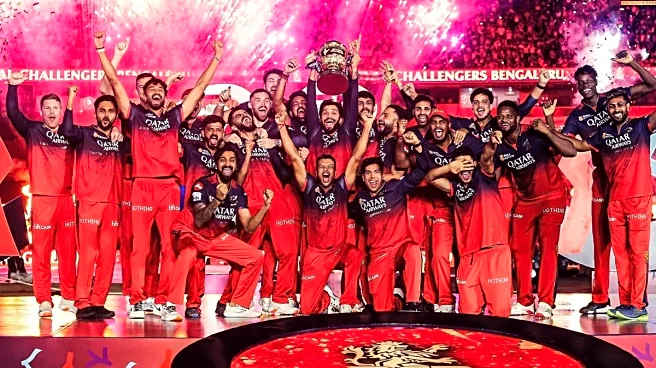Bengaluru has always been the city that picks up trends early. Tech, coffee culture, gaming, K drama, cosplay, everything lands here before the rest of the country blinks. The newest wave sweeping through
classrooms, college hostels and even co working spaces is something nobody expected to treat as a problem. Japanese comic books. Manga.
What began as a harmless hobby is now landing people inside the SHUT (Service for Healthy Use of Technology) Clinic at NIMHANS (National Institute of Mental Health and Neuro Sciences). And the age group is not just school kids losing sleep over cliff-hangers. Even 25 year olds have walked into therapy saying they simply cannot stop.
A New Kind of Addiction
“In the last six months alone, we have seen at least six or seven cases where manga reading has turned into a behavioural addiction. These youngsters were unable to stop, were losing sleep, skipping routines and showing clear signs of dependency,” said Dr Manoj Kumar Sharma of SHUT Clinic.
These are not casual fans who enjoy a volume on a Sunday. These are readers who stay up all night, skip meals, lose focus at work or school and show withdrawal like irritability and anxiety when they cannot read.
Doctors say this pattern is similar to behavioural addictions seen with gaming, binge watching and online scrolling. The brain gets rewarded again and again with fast paced story arcs and endless chapters.
Manga is released in long running series. Many have thousands of pages available online. Readers convince themselves that they will stop after one chapter. Then one more. Then one more. Before they know it, dawn has arrived and they have read for six hours straight.
Why Manga Hooks the Brain
Manga is not like the cartoon books Indian kids grew up with. It has intense plot twists, layered characters and deeply emotional storytelling. The pace is fast and intentionally addictive.
Every chapter ends with a cliff that forces the reader to click next even when the eyes are burning. Many are drawn into massive fictional universes with hundreds of characters. The reward loop is strong and constant.
Add the fact that manga is available for free on multiple sites. No friction. No cost barrier. Everything is in your pocket. For young working adults in Bengaluru who already juggle stress, deadlines and loneliness, manga becomes an escape hatch.
A full emotional world where life is dramatic, meaningful and always unfolding. Some readers start identifying more with fictional characters than their real social circles.
Who Is Getting Addicted
The common belief is that only school kids or teenagers are vulnerable. In the recent cases, there were college students, IT employees, design professionals and even a 25 year old who said reading manga till 3 am was the only way to fall asleep.
Many describe the same pattern. They start reading after dinner, thinking it will be a break. Then the plot pulls them in. They keep scrolling till midnight. Then till 2 am. The next morning, they wake up groggy, skip breakfast, show up late to work or college and promise themselves that they will stop today. But the cycle repeats.
Parents of teenagers report that their children refuse to attend class, stop meeting friends and get aggressive when asked to switch off their devices. Some say their children started living in fictional fantasies, imagining relationships or battles from manga as if they were real.
The Bengaluru Context
This city has a culture that silently fuels such patterns. High stress jobs. Long commutes. Hostel living. Digital comfort. A strong anime and manga fan scene where reading is a badge of identity. Comic cons. Cosplay groups. Reddit and Discord communities that discuss chapters at 2 am. It is easy to slip from community bonding into compulsive reading.
Bengaluru has also become a hub for Japanese pop culture. Anime cafes, manga libraries and merch stores have popped up in areas like Koramangala, Indiranagar and JP Nagar. None of these are problems by themselves. But together they create a perfect storm where manga becomes life rather than leisure.
How Addiction Shows Up
Doctors say the warning signs are clear. Declining marks or work performance. Staying awake till dawn. Constant tiredness. Losing interest in real life events. Reading manga during meals or social events. Hiding phone usage. Getting irritated when asked to stop. Thinking obsessively about characters. Using manga to escape any uncomfortable emotion.
This is not very different from the early signs of gaming addiction. Except here, reading looks harmless from the outside. It is quiet. It looks like concentration. Nobody realises the person has slipped into a compulsive loop until their lifestyle collapses.
What Therapy Looks Like
Psychiatrists say treatment focuses on breaking the binge cycle. They ask patients to set reading windows, replace late night reading with a calming routine, and gradually reduce screen exposure. In extreme cases, apps are blocked, devices are handed over to family members and structured sleep schedules are created.
Therapists also dig into the emotional reasons behind the addiction. Loneliness. Perfection pressure. Social anxiety. Relationship gaps. Once the cause is addressed, the compulsion loosens its grip.
The Bigger Picture
Manga addiction might sound like a quirky urban problem. But it is part of a bigger behavioural trend. As long as stories come in endless digital pages, as long as stress is high and sleep is low, compulsive reading will keep appearing in pockets like Bengaluru.
The answer is not banning manga. The answer is balance. Knowing when the story is pulling you in too deep. Knowing when to close the tab and step back into the real world.














